Tough Partner: CRN Reviews The Panasonic Toughpad FZ-G1
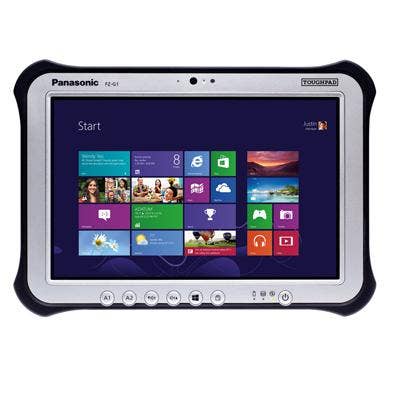
It's Got That Power
When sizing up equipment that's destined for field deployment, it's often cheaper in the long run to spend more on a machine that's built to last than to replace it every year or two. Squarely in the former category is the Toughpad FZ-G1 from Panasonic. This high-power tablet for Windows is built for the rough-and-tumble world of construction sites, hospitals, military deployment and anywhere that a machine is expected to take a licking and keep on ticking. Though it won't win any awards for svelteness or low cost, Panasonic's latest ruggedized tablet is no slouch performancewise; its specs are on par with Microsoft's Surface Pro 2 and Dell's Venue 11 Pro. Here's a look at the major differentiators of the Toughpad.
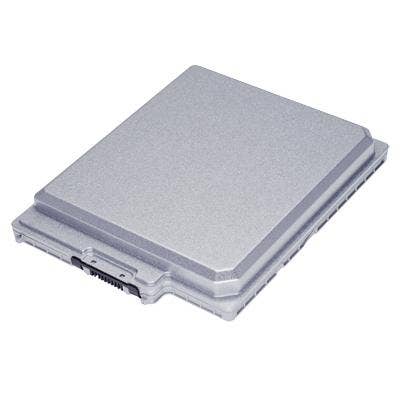
Serviceable Battery
Few things sap productivity more completely than a dead battery. It's an obvious point, but long battery life is only as useful as the person in charge of charging it. The unit includes a 6-cell 4400 mAh battery that's rated to deliver eight hours of continuous use, presumably with Panasonic's energy-saving software intact. In our tests, which force screen brightness to 100 percent but leave other settings alone, the Toughpad delivered three hours and 25 minutes of continuous media playback. If there's a need for longer periods on battery power, Toughpad accessories include a 9-cell 9300 mAh battery that's rated to provide more than 18 hours between charges. There's also a car-charging unit and a vehicle dock.
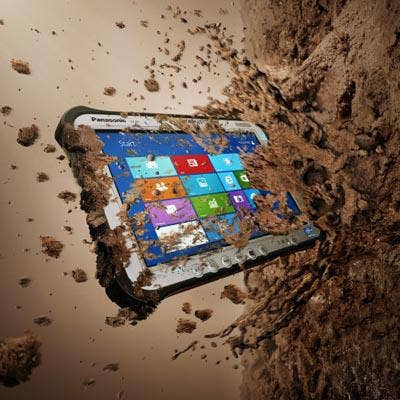
Military Endurance
We've been hearing a lot lately about physical endurance of laptops, as companies seek to differentiate their products and make them more suitable for field deployment. Toughpad bravely carries on the tradition of developing ruggedized devices pioneered by Panasonic more than a decade ago with the first Toughbook (circa 1997). Toughpad adheres to MIL-STD-810G and IP65, a rigorous set of tests against a device's ability to repel dust, dirt, moisture and debris, and to survive drops and dings. While it likely wouldn't live through complete liquid immersion, it's designed to endure spills, 70-mph driving rain on any surface and 26 drops from a height of up to five feet.
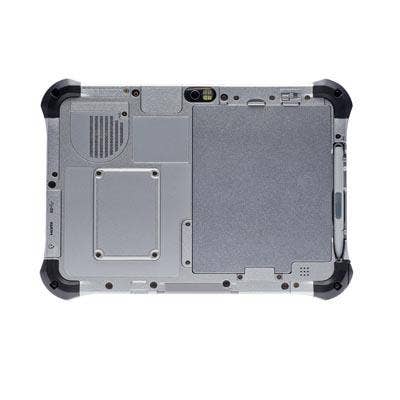
Dimensions And Physicality
Ruggedness comes at a price. Toughpad measures 10.6 inches long by 7.4 inches wide and is a chunky 0.8 inches thick. Its magnesium alloy chassis is surrounded by an ABS and elastomer border with protruding corners. A slightly elevated bezel helps protect the glass from drops on its face. It weighs 2.5 pounds without the power supply.
All controls and LEDs are along the lower front of its face. Dedicated buttons from right to left are power, screen rotation lock, Windows and volume up and down, followed by two programmable buttons. There are LEDs for power, hard drive access and battery status. Behind a flip-up waterproof cover on the right-hand edge are a full-size HDMI output port, the unit's single USB 3.0 port and a 3.5mm headset jack. The left edge holds a power input cover and the stylus. The top edge is home to an option slot that can accept a 9-pin serial port, USB 2.0 port, microSD card reader and or a Gigabit Ethernet port, as on the tested unit. The microSD slot can support as much as 64 GB of memory, adding to standard 128 GB or 256 GB SSD configurations.
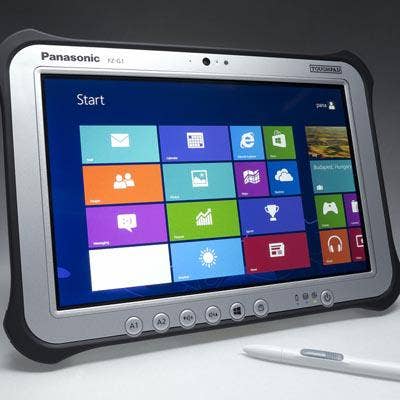
Display And Options
Toughpad's 10.1-inch display puts out 1,920-x-1,200 pixels and is backed by an 800-nit LED. Like all "Tough" devices we've tested, the screen is clearly visible outdoors even in the brightest sunlight. Behind the unit's toughened glass is a 10-point capacitive touch screen, and its second-generation IPS panel is driven by an Intel QM77 video controller with 1664 MB of VRAM. Next-gen IPS reportedly improves energy efficiency without compromising its near 180-degree viewing radius. An included stylus tucks neatly away in an integrated cradle; a tether is among the optional Toughpad accessories as is a hand strap for holding the unit palette-style. Options for wireless include radios for 4G LTE and 3G Mobi networks, as well as a GPS receiver. The Toughpad includes Bluetooth 4.0 and Wi-Fi a/b/g/n with ports for an optional dual high-gain antenna.
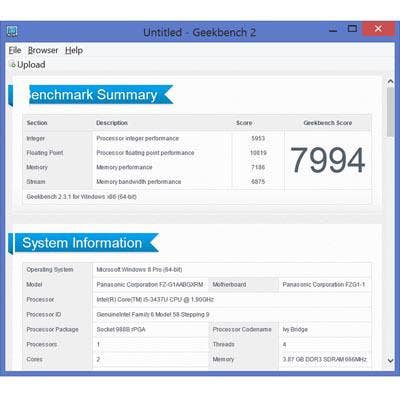
Performance
Panasonic built the Toughpad FZ-G1 around an Intel Core i5-3437U dual-core vPro (Ivy Bridge) processor running at 1.9GHz. The tested unit came with 64-bit Windows 8 Pro running on 4 GB, half of the unit's maximum. A high Geekbench score of 7,994 was enough to put the Toughpad in seventh place on the CRN Test Center's all-time list of the fastest Windows laptops and tablets.
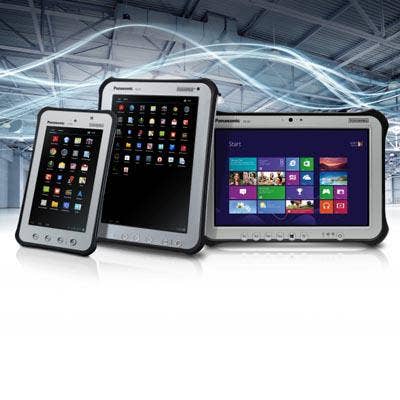
The Bottom Line
At a list price that starts at $2,399, the Toughpad FZ-G1 is clearly not for every situation. It's one of a series of ruggedized tablets that also includes the 10.1-inch Toughpad FZ-A1 ($1,299) and 7-inch Toughpad JT-B1 ($1,199) units, running Android 4.0 on dual-core processors from Marvell and Texas Instruments. The company surrounds its durable devices with features and accessories that cater to a variety of vertical markets. For companies seeking a durable platform for field application deployment, the CRN Test Center recommends the Toughpad FZ-G1 from Panasonic.